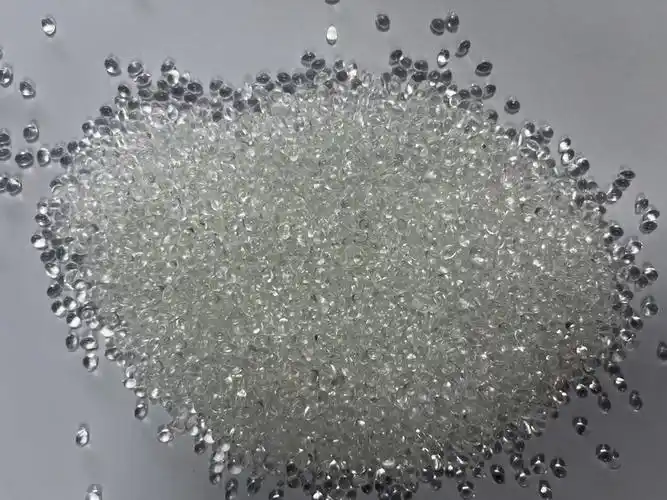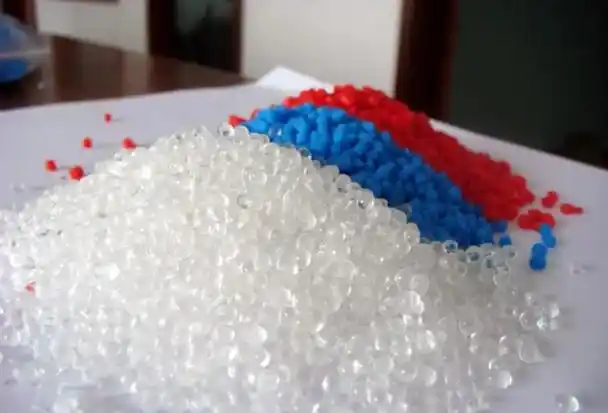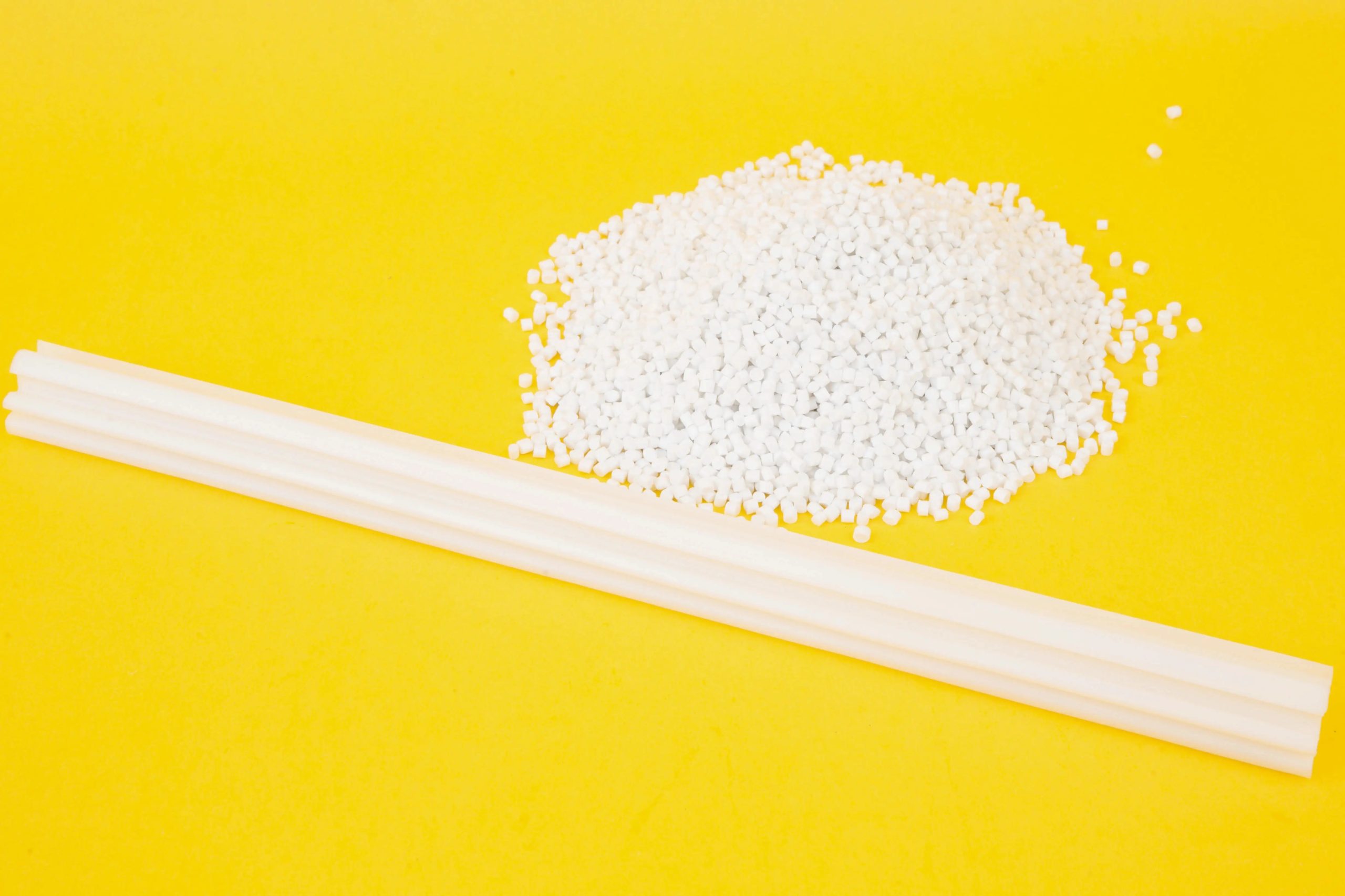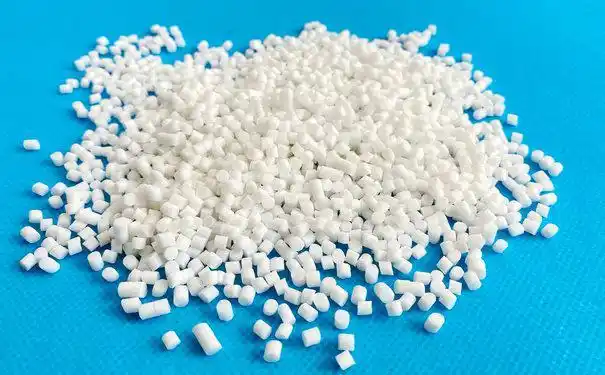Having spent over a dozen years in the materials industry, working on everything from sneaker soles to medical device components, I’ve handled my fair share of polymers. One question that keeps popping up, especially from designers, small business owners, and curious DIYers, is: What does TPR material look like? It’s a great question, as the appearance and feel of a material can make or break a product’s appeal. Thermoplastic Rubber (TPR) is a versatile player in manufacturing, and its look and texture can vary widely depending on how it’s processed and used. Drawing from my experience across industries, I’ll walk you through TPR’s visual and tactile characteristics, how it compares to other materials, and what to expect in real-world applications. Let’s dive in with a hands-on perspective.

Understanding TPR: The Basics
Before we get to what TPR looks like, let’s clarify what it is. TPR, or Thermoplastic Rubber, is a type of thermoplastic elastomer (TPE) that combines the flexibility of rubber with the moldability of plastics. I first encountered TPR when consulting for a footwear company that needed a grippy, cost-effective material for shoe soles. TPR is typically made from blends of polymers like styrene-butadiene-styrene (SBS) or styrene-ethylene-butylene-styrene (SEBS), mixed with plasticizers and additives to tweak its properties—think hardness, color, or texture.
What makes TPR special is its thermoplastic nature, meaning it can be melted and reshaped multiple times, unlike traditional rubber, which is thermoset and permanently set after curing. This versatility allows TPR to take on a wide range of appearances and feels, which I’ll break down below.
The Visual Appearance of TPR
When people ask what TPR looks like, they’re often trying to picture its color, texture, and overall aesthetic. Here’s what I’ve observed from working with TPR in various projects:
1. Color
Natural State: In its raw form, TPR is typically translucent or slightly milky, with a pale, off-white hue. I’ve seen unprocessed TPR pellets in factories, and they look like small, cloudy plastic beads.
Colored TPR: Manufacturers can add pigments to create virtually any color—black, white, red, neon green, you name it. I worked on a project for colorful toy grips where we used vibrant TPR in blues and pinks to appeal to kids. Unlike some plastics that look flat, TPR’s slight sheen gives colors a lively, polished look.
Opacity: TPR can be formulated to be fully opaque, semi-transparent, or fully transparent, depending on the additives. For example, I’ve seen transparent TPR used in flexible phone cases to show off a device’s design, while opaque TPR is common in shoe soles for a solid, uniform look.
2. Surface Finish
Smooth and Glossy: TPR can be molded to have a smooth, glossy surface, like the shiny handles on kitchen tools. I’ve specified glossy TPR for products where a sleek, premium look was key.
Matte or Textured: Many TPR products have a matte or slightly grainy finish to enhance grip. Think of the soft, non-slip surface of a yoga mat or the textured grip on a toothbrush. I once helped a client design TPR tool handles with a stippled texture to prevent slipping during use.
Custom Patterns: TPR’s moldability allows for intricate surface patterns, like embossed logos or geometric designs. I’ve seen TPR shoe soles with detailed treads that not only look cool but also improve traction.

3. Clarity and Transparency
While TPR can be made transparent, it’s rarely crystal-clear like glass or acrylic. Instead, it has a slightly hazy or frosted appearance when transparent. I worked on a medical tubing project where semi-transparent TPR let users see fluid flow without being fully see-through, balancing function and aesthetics.
4. Shape and Form
TPR’s flexibility means it can take on complex shapes, from thin, bendy films to thick, cushioned parts. I’ve seen TPR molded into everything from intricate toy figures to chunky industrial seals. Its ability to hold fine details makes it popular for products where appearance matters, like consumer electronics.
The Tactile Feel of TPR
Beyond looks, TPR’s feel is a big part of its identity. Here’s what you can expect when you touch it:
Soft and Flexible: TPR ranges from soft and squishy (like stress balls) to firm but pliable (like shoe soles). I’ve handled TPR yoga mats that felt soft underfoot but held their shape, unlike harder plastics.
Rubber-Like Grip: TPR often has a tacky, grippy texture, making it ideal for handles or mats. I remember testing TPR grips for a power tool—they felt secure even with sweaty hands, unlike slippery plastic.
Smooth or Textured: Depending on the mold, TPR can feel silky smooth or slightly rough for extra grip. For example, TPR phone cases often have a smooth, almost velvety feel, while industrial TPR parts might be textured for durability.
Lightweight: TPR is generally lighter than traditional rubber, which is why it’s popular for portable products like earbuds or wearable devices.

How TPR Compares to Other Materials
To give you a clearer picture, let’s compare TPR’s appearance and feel to other common materials. I’ve put together a table based on my experience specifying materials for various projects:
| Material | Appearance | Feel | Common Uses |
|---|---|---|---|
| TPR | Translucent to colorful, glossy to matte | Soft, grippy, flexible | Shoe soles, grips, toys |
| Rubber (Natural/Synthetic) | Opaque, often black or dark | Firm, elastic, sometimes sticky | Tires, seals, hoses |
| Silicone | Translucent or colorful, smooth | Soft, slick, highly flexible | Kitchenware, medical tubing |
| Plastic (e.g., ABS) | Opaque, glossy or matte | Hard, rigid | Housings, structural parts |
From the table, you can see TPR’s rubber-like look and feel set it apart from rigid plastics, while its moldability gives it an edge over traditional rubber in terms of color and texture variety.
Factors That Influence TPR’s Appearance
TPR’s look and feel aren’t set in stone—they depend on several factors I’ve encountered in manufacturing:
Formulation: The blend of polymers and additives determines TPR’s hardness, color, and clarity. For example, adding more plasticizer makes TPR softer and more flexible, while fillers can create a matte finish. I once adjusted a TPR formula to make a toy softer and brighter to match a brand’s aesthetic.
Processing Method: TPR is typically injection-molded or extruded, which affects surface finish. Injection molding gives a polished look, while extrusion can create a slightly grainy texture, as I saw in TPR tubing for irrigation systems.
Additives: Pigments, UV stabilizers, or flame retardants can alter TPR’s appearance. I worked on a project where UV-resistant TPR was used for outdoor mats, giving them a slightly glossier finish to withstand sun exposure.
Post-Processing: Techniques like polishing, texturing, or coating can change TPR’s final look. I’ve seen TPR shoe soles coated for extra shine, making them pop on store shelves.
Real-World Examples of TPR’s Appearance
To bring TPR’s look to life, let me share a few projects where its appearance was a key factor:
Sneaker Soles: A footwear brand I consulted for used black, matte TPR for sneaker outsoles. The soles had a subtle grainy texture for grip and a clean, understated look that paired well with the shoe’s design. They could’ve gone glossy, but matte felt more modern.
Phone Cases: A client wanted transparent TPR cases to showcase phone designs. The TPR had a frosted, semi-clear look with a soft, grippy feel, making the cases both stylish and practical.
Toy Figures: For a line of action figures, we used colorful TPR (red, blue, green) with a smooth, slightly glossy finish. The material’s flexibility let us mold intricate details, like tiny facial features, that kids loved.
Tool Handles: A power tool manufacturer chose textured, black TPR for ergonomic grips. The rough, tacky surface ensured a secure hold, and the dark color hid dirt from heavy use.
These examples show TPR’s versatility in balancing aesthetics and function, whether it’s vibrant and smooth or subdued and grippy.

Common Applications and Why Appearance Matters
TPR’s look and feel make it a favorite across industries. Here’s where you’ll encounter it and why its appearance is critical:
Footwear: TPR soles are often matte or textured to provide grip and durability while looking sleek. Color options let brands match soles to shoe designs, as I saw with a sneaker line that used neon TPR for a bold statement.
Consumer Electronics: TPR in phone cases or earbud tips is often smooth and semi-transparent for a premium, modern look. The soft feel adds comfort for prolonged use.
Toys: Brightly colored, glossy or matte TPR is common in toys for safety and visual appeal. I’ve seen TPR used in squishy toys where vibrant colors attracted kids’ attention.
Medical Devices: TPR tubing or grips often have a smooth, semi-clear finish for cleanliness and visibility, as in a project I worked on for IV tubing.
In each case, TPR’s appearance is tailored to enhance the product’s functionality and marketability.
Challenges and Considerations with TPR’s Appearance
While TPR is versatile, its look isn’t without challenges. Here’s what I’ve learned:
Color Consistency: TPR’s color can vary slightly between batches if pigments aren’t mixed precisely. I’ve had to rerun batches for clients when a TPR toy came out too pale.
Surface Wear: Glossy TPR can show scratches or scuffs over time, especially in high-wear applications like shoe soles. Matte or textured finishes hide wear better, as I found with tool grips.
Environmental Fading: Without UV stabilizers, TPR can fade or yellow in sunlight. I once saw outdoor TPR mats lose their vibrancy after a season, so always specify UV-resistant grades for outdoor use.
Texture Limitations: While TPR can be textured, extremely fine or complex patterns may not hold up in soft grades. I’ve had to adjust designs to ensure textures stayed crisp.

Tips for Working with TPR
If you’re considering TPR for a project, here’s my advice based on years of material selection:
Specify Your Aesthetic: Want a glossy, vibrant look or a matte, grippy feel? Communicate this to your supplier early. I always provide mood boards to align on appearance.
Test Samples: Request TPR samples in different colors and textures to see how they look and feel in your application. I’ve saved clients from costly mistakes by testing first.
Consider End Use: If the product will face wear or sunlight, opt for textured, UV-stabilized TPR to maintain its look. For indoor use, glossy or transparent TPR can shine.
Work with Suppliers: Collaborate with manufacturers to fine-tune TPR’s formulation. I’ve tweaked hardness and color with suppliers to get the exact look a client wanted.
Balance Cost and Appearance: Vibrant colors or complex textures can raise costs. Weigh aesthetics against budget, as I did for a client who chose simpler TPR finishes to stay profitable.
Future Trends in TPR’s Appearance
The materials industry is always evolving, and TPR’s look is no exception. Here are trends I’m seeing:
Bio-Based TPR: New TPRs made from renewable sources are hitting the market, often with a natural, earthy aesthetic that appeals to eco-conscious brands.
Metallic or Pearlescent Finishes: Additives are creating TPR with shimmery, metallic looks, ideal for premium consumer goods like watch straps.
Smart Textures: Advances in molding are enabling TPR with self-cleaning or anti-slip textures, which I’m excited to see in future products.
These innovations could make TPR even more visually versatile, opening new design possibilities.

Wrapping Up
So, what does TPR material look like? It’s a chameleon—translucent or colorful, glossy or matte, smooth or textured, with a soft, grippy feel that mimics rubber but offers more design flexibility. From vibrant sneaker soles to sleek phone cases, TPR’s appearance can be tailored to suit countless applications. Its look depends on formulation, processing, and additives, so working closely with suppliers is key to getting it right. My years in the field have shown me that TPR’s versatility is its strength, but choosing the right finish and texture is crucial for success. Whether you’re designing a product or just curious, I hope this gives you a clear picture of TPR’s potential.
Related Questions and Answers
Q: How do I know if a product is made of TPR?
A: Check the product’s spec sheet or ask the manufacturer. Visually, TPR often looks smooth or slightly textured with a rubber-like feel. If it’s soft, grippy, and lightweight, it’s likely TPR rather than rigid plastic or heavy rubber.
Q: Can TPR be painted or coated to change its look?
A: Yes, TPR can be painted or coated, but adhesion can be tricky due to its flexibility. I’ve seen TPR coated with soft-touch paints for a premium feel, but test compatibility to avoid peeling.
Q: Does TPR look cheap compared to rubber?
A: Not necessarily. High-quality TPR can look sleek and modern, especially with glossy or vibrant finishes. I’ve used TPR in premium products where its appearance rivaled rubber, though rubber feels more robust for industrial uses.
Q: How does TPR hold up in outdoor environments?
A: Without UV stabilizers, TPR can fade or yellow outdoors. I’ve seen TPR mats lose color after a summer in the sun. Specify UV-resistant grades for outdoor products to maintain their look.





